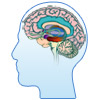
Good mental health entails balance between the sympathetic and parasympathetic systems
A lot can be achieved if the stigma surrounding mental health illnesses is removed
New Delhi, 9th June 2018: The recent suicides by celebrity chef Anthony Bourdain and fashion designer Kate Spade have once again brought mental health issues to the fore. Mental health problems affect people irrespective of their age. If left undiagnosed and unmanaged for long, they can lead to a person committing suicide as well. There is a need to create awareness on the fact that understanding the warning signs and knowing who is at risk can prevent a crisis from becoming a tragedy.
India is facing a serious mental health crisis, with an estimated 56 million people suffering from depression and 38 million from anxiety disorders, according to a report by WHO. However, what exacerbates the situation is the fact that there is a lot of stigma associated with this condition.
Speaking about this, Padma Shri Awardee, Dr K K Aggarwal, President, HCFI, said, “Depression is a major public health problem as a leading predictor of functional disability and mortality. All depressed patients must be enquired specifically about suicidal ideations. Suicidal ideation is a medical emergency. Risk factors include psychiatric known disorders, medical illness, prior history of suicidal attempts, or family history of attempted suicide. The risk of suicide increases with increase in age; however, younger and adolescents attempt suicide more than the older. Females attempt suicide more frequently than males, but males are successful three times more often. The highest suicidal rate is amongst those individuals who are unmarried followed by widowed, separated, divorced, married without children and married with children in descending order. Living alone increases the risk of suicide.”
In those people where the sympathetic nervous system is dominant, there is a feeling of nervousness, jitteriness or tension. When a person is depressed, there is a disconnect between his physical and mental health.
Adding further, Dr Aggarwal, who is also the Vice President of CMAAO, said, “Quantum physics explains that the mechanism of depression and anxiety can be an imbalance between understanding the way particle duality functions. Balancing this can further help in treating depression and other such mental disorders. The parasympathetic nervous system plays a vital role in maintaining both mental and physical health by helping the body to calm down from stress reactions that elevate blood pressure, dilate the pupils, and divert energy from other body processes to fighting or fleeing.”
HCFI tips to practice a parasympathetic lifestyle.
· Include foods that support your system Consume a diet based on whole foods. This includes green leafy vegetables, quality protein, healthy fats, and complex carbohydrates.
· Hydrate the body adequately staying hydrated will help the lymphatic system flush out toxins and remove the metabolic waste out of the body. This is essential to detoxify, nourish, and regenerate tissue.
· Include some physical activity Exercise is positive physiological stress for the body. Yoga, for example, is known to accrue great benefits to both the mind and body.
· Practice mindfulness this includes a combination of practices, habits, thoughts, and behaviours to help you get through your daily life. Mindfulness means intentionally and actively seeking to lower the body’s response to stress.
--Heart Care Foundation of India
|
|


Comments: